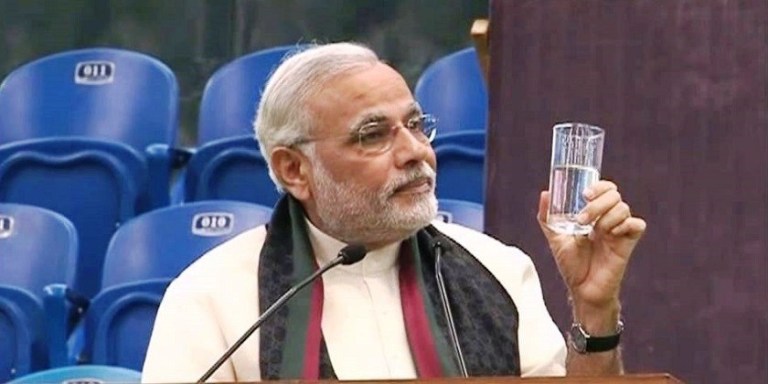As India fights its way through hot Indian summers, water shortage in several regions has further added to the challenge. According to a NITI Aayog’s 2018 report “COMPOSITE WATER MANAGEMENT INDEX ”, around 2,00,000 Indians die every year due to inadequate access to safe water and around 60 crore Indians face high to extreme water stress. The report also mentions that 21 cities which include Delhi, Chennai, Bengaluru and Hyderabad will run out of ground water by 2020 adversely affecting 10 crore people.
Taking note of the mammoth challenge ahead, Modi government has already swung into action. Union Minister of the newly created Ministry of Jal Shakti, Gajendra Singh Shekhawat will be launching the Jal Shakti Abhiyan today in Delhi. The Jal Shakti ministry which is essentially a combined version of the erstwhile Ministry of Water Resources and Ministry of Drinking Water and Sanitation brings in all the water related issues under a single umbrella.
For the Jal Shakti Abhiyan, Government has roped in 255 bureaucrats form various departments and ministries and has nominated them for one water stressed district each. The campaign aims to increase the water table in water-stressed areas through dams, ponds and afforestation. The campaign will also include rejuvenation and cleaning of neglected and old water bodies. The government has also been making efforts to make it a public movement, for the same a team of officials from the center to the local level will head to water-stressed areas to involve the local community, students to drive the Jal Shakti Abhiyan.
Leading the efforts PM Modi, in his first Mann ki Baat address on Sunday, also stressed on the importance of water conservation. Focusing on the collective efforts of the Indian Society towards the Swacch Bharat Abhiyan, PM said: “When we come together and work hard, then most difficult tasks can be accomplished successfully.” He also drew a parallel between the efforts towards Swacch Bahart and water conservation. “Like swachhata, let us make water conservation a Jan Andolan (people’s movement),”
PM Modi also called on citizens to suggest information and work done on water conservation using #JanShakti4JalShakti on social media platforms. He said it is important to spread awareness about conserving every drop of water. In fact, water conservation was a big part of PM Modi’s first ‘Mann ki Baat’ program after the election victory.
The Swachh Bharat Abhiyan which saw massive public participation has been a successful project in awakening a collective sentiment which brought out people on the streets for working towards a common goal of a cleaner India. Similarly, the Jal Shakti Abhiyan is seemingly aimed to increase public participation in water conservation which combined with the efforts of the government, are sure to give a huge positive push to India’s water security.
The Prime Minister also talked about the current situation of rainwater harvesting system and the water crisis in many regions of India and said that only 8% of the rainwater in the whole year is harvested in our country. Further pushing the efforts to harvest rain water, Central Ground Water Board under Ministry of Jal Shakti is working on construction of 1.11 crore rain water harvesting and artificial recharge structure across the country at an estimated cost of Rs 79,178 crores to harness surplus monsoon runoff to revive the existing water resources. According to the state run state-run India Meteorological Department this year since the start of the season on June 1, the country has received around 38% lesser rainfall than average.
